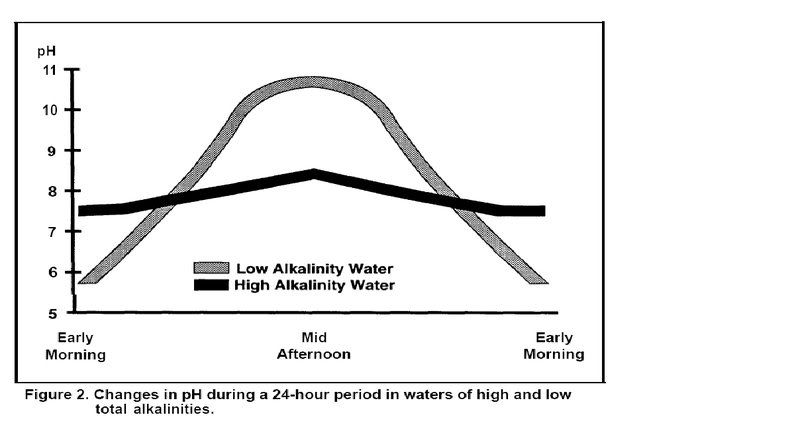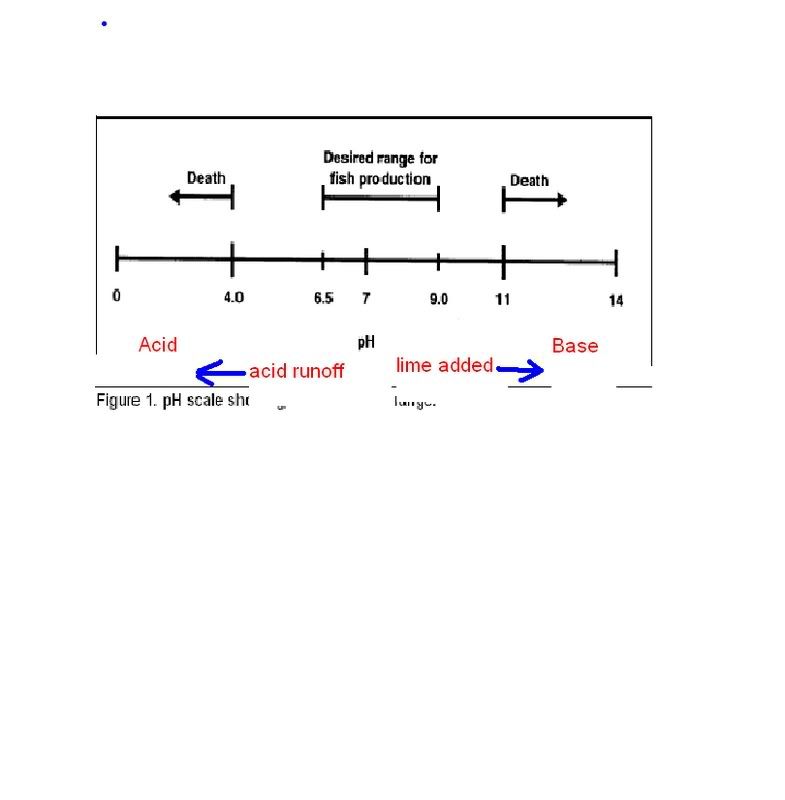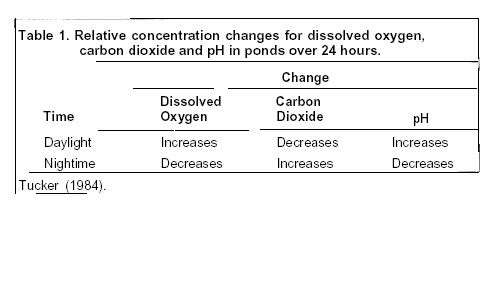How do you know the alkalinity is low.
"no fluctuation in PH from morning to late evening"
and
"PH is a little high...around 8.4-8.6"
are not indicative of low alkalinity.
The optimum alkalinity for growing fish is that which makes the water pH match the fish's blood pH.
Adding lime depends on your soil and water and to a smaller degree the type of fish. Good alkalinity (not based on 20ppm min for fertilizing) is the key to controlling large daily pH swings which stress fish. The buffering ability of alkalinity greatly reduces the large pH swings irrespective of fertilization.
From SARC on water auality.



A desirable range of total alkalinity for fish culture is between 75 and 200 mg/L CaCO3.
Pond pH varies throughout the day due to respiration and photosynthesis. After sunset, dissolved oxygen (DO) concentrations decline as photosynthesis stops and
all plants and animals in the pond consume oxygen (respiration). In heavily stocked fish ponds, carbon dioxide (CO2) concentrations can become high as a result of
respiration. The free CO2 released during respiration reacts with water, producing carbonic acid (H2CO3), and pH is lowered. H2O + CO2 = H2CO3 = H+ + HCO3.
Carbon dioxide rarely causes direct toxicity to fish. However, high concentrations lower pond pH and limit the capacity of fish blood to carry oxygen by lowering blood pH at the gills. At a given dissolved oxygen concentration e.g., 2 mg/L, milligrams per liter; same as parts per million, ppm), fish may suffocate when CO2 levels are high and appear unaffected when CO2 is low.
In water with moderate to high alkalinity (good buffering capacity) and similar hardness levels, pH is neutral or slightly basic (7.0 to 8.3) and does not fluctuate widely.
Higher amounts of CO2 (i.e., carbonic acid) or other acids are required to lower pH because there is more base available to neutralize or buffer the acid.